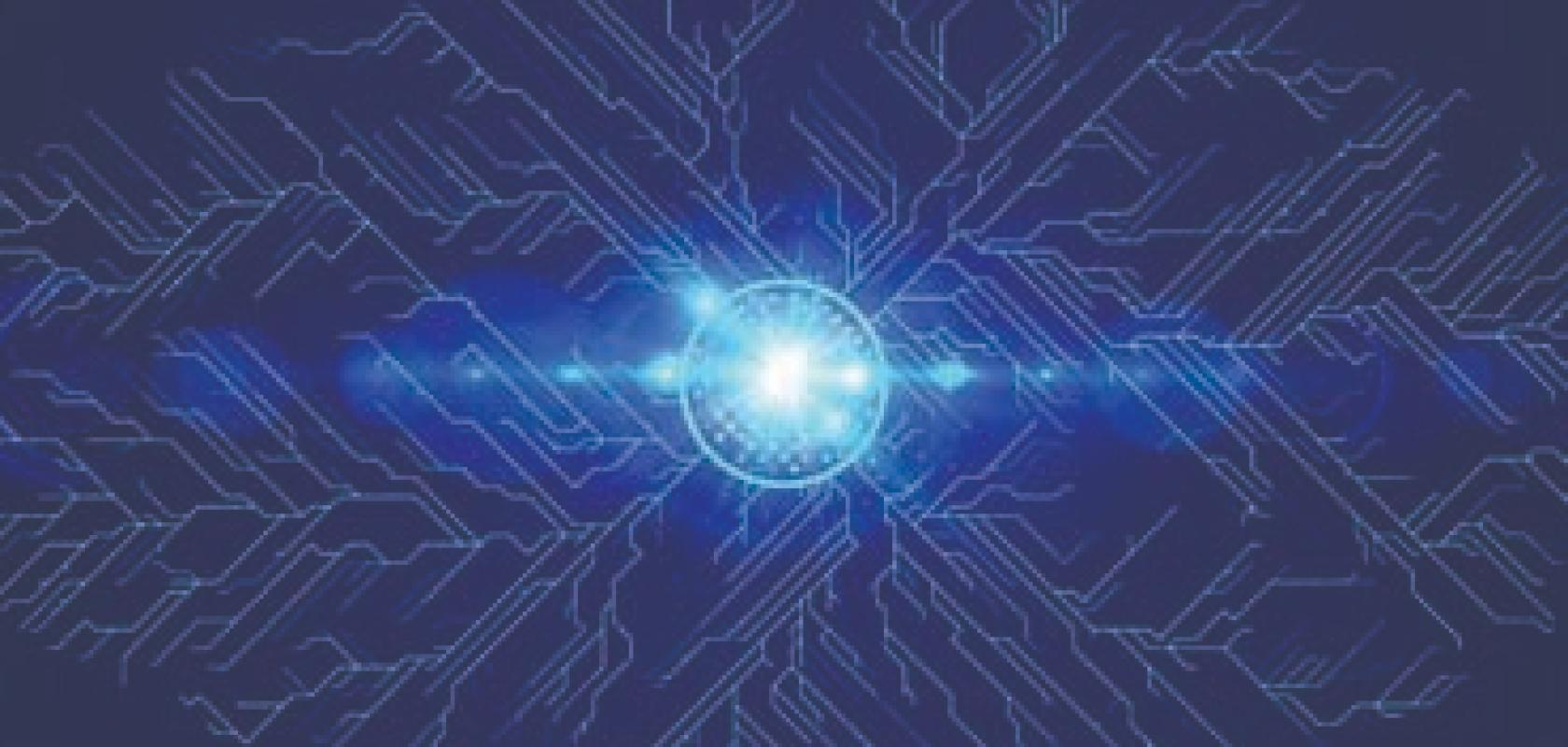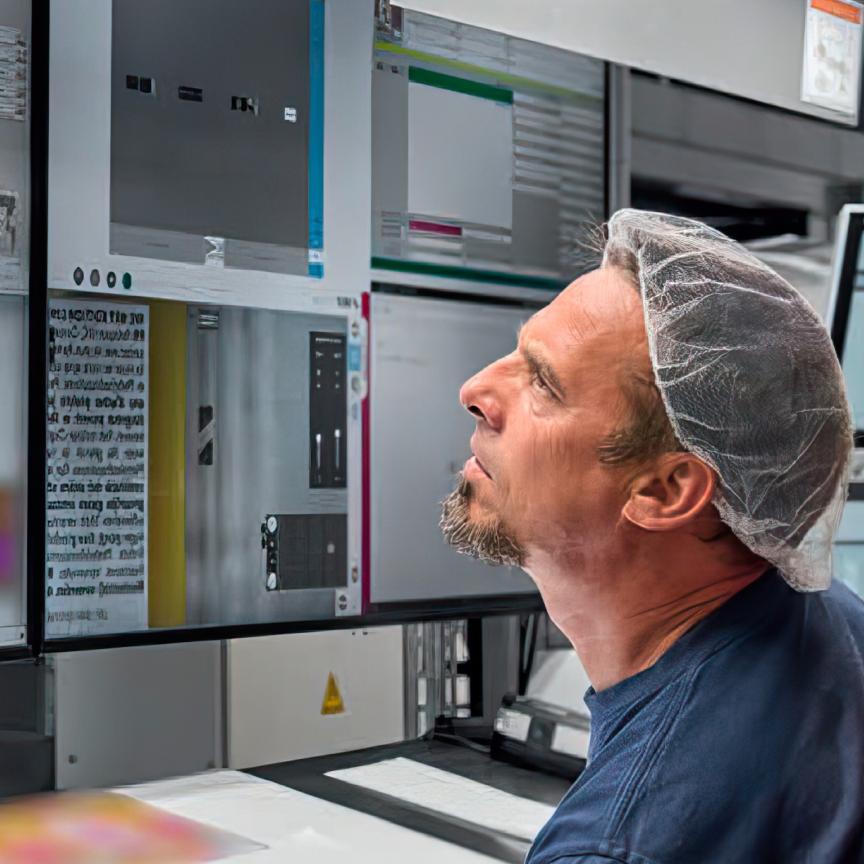An insight into some of the challenges faced by engineers, system integrators and anyone selecting components for a line scan camera system, and advice on how the process can be simplified
Line scanning can produce two-dimensional images using a single sensor element. In its early iterations it was used for both visible light and infrared imagery from the 1960s through to the 1980s, particularly in aerial reconnaissance applications.
Today’s line-scan cameras use a single line of pixels or, in the case of colour, multiple lines of pixels, that image across an object to build up a 2D image. It is mainly used in applications that require a continuous flow of objects on a conveyer belt, or where the object itself is ‘endless’, such as foil inspection or roll-to-roll printing, thanks to their high-speed and high resolution compared to area scan systems. Other applications include printing machine manufacture, the production of wafer inspection systems and machines for PCB inspection and food sorting systems.
With such diverse applications, it can be a challenge for engineers to design and assemble the line-scan camera element of the system, depending on their level of vision experience. There are many components from which to select, and many require extensive knowledge about cameras, optics and lighting. For example, when choosing a camera and suitable lens, it needs to be considered whether it will be just one camera with a long sensor, or whether a solution with two cameras and shorter sensors would be more suitable.
Klaus Riemer, project manager at Chromasens, explains: ‘If you design a normal matrix camera system, you can take a camera, light and lens and play around with it, and in maybe an hour, you could gain a good idea of what might work. With line scan, it is more difficult to play around with the system because an image is created only with the movement of the object or the camera. To optimally adjust light and sharpness, the object must often be captured several times. It’s a good idea to first have the components that already fit what the application will require.’
Cost challenges
Another major challenge is in keeping the system costs low. The requirements may be fulfilled by, for example, simply choosing the perceived ‘best’ lens, but this is not always necessary and can make the system unnecessarily expensive. Riemer continues: ‘Line scan lenses need to cover a large image diameter and are made in smaller quantities compared to C-Mount lenses. This makes them very expensive, up to €3,000. A higher-cost lens could match your requirements, but it is important to look at the whole system performance to avoid over engineering. You have to find the trade-offs and look at what’s really necessary, because sometimes the specification or the requirements might be too sophisticated or over-specified. From this, a lens with less performance might work as well and save cost. Often, applications require high resolution and a large field of view. So, even with 15,000 or 16,000 pixels, you cannot cover the whole field of view. So, then you use multiple cameras in a row. Then, the trade-off may be a camera with a shorter pixel length, but a cheaper lens. Therefore using three cameras may be a better choice than, say, using two cameras with a higher-resolution and a more expensive lens.’
Another consideration is the light. What makes the defects or features to be detected visible? Should they use dark field, bright field, diffuse light or co-axial light? Or even a combination of light characteristics: for example, dark field and co-axial light may be required, depending on the defects and object surface. Light intensity is also important. ‘It depends on the surface,’ says Riemer. ‘If you have a very shiny surface and you want to find dust particles, for example, dark field imaging works well because it’s a black image on which only the dust particles appear bright. But, if you want to see structure on a shiny surface, you need more co-axial light. Sometimes the customer wants to see both the structure and the dust, and then they need both types of light.’
Component testing can also be challenging with line scan systems because it requires the object to be transported, and in doing so, the lens and light must be exactly aligned to each other. To save time, it is important to have only a limited number of components for testing that are as close as possible to a suitable solution. ‘Let’s say, for example, in an application with a conveyor,’ says Riemer. ‘The object is placed on the conveyor, and it is switched on. Then the camera and the conveyor must be synchronised, because, if the camera runs much faster than the conveyor, you can get a condensed image whereas, the other way around, the image can be elongated.’
Last but not least is system integration, which needs to bring all components into a stable system: aligning camera, light and transport system. The object transport needs to be synchronised with the line rate of the camera using encoders. ‘Sometimes the machine builder has to test in the machine and cannot use the lab because here the conditions of the machine cannot be exactly reproduced. On the other hand, it’s more time consuming in the lab, so they just want to use the objects that are already running in the machinery and they need quite a realistic scenario,’ explains Riemer.
A helping hand
To help address all of these challenges, Chromasens developed the Line Scan Vision Platform. It is designed to not only simplify the design of a complete line scan camera system, but also to offer the possibility to create an ‘all-in-one’ solution, using standard products and predefined elements from a modular framework. This approach can reduce the time for system design and provide an optimised, cost-efficient solution.
The platform is based on the requirements of the application, such as resolution, speed, scan width and so on, so the engineers and other system designers can determine the appropriate components with the help of a configuration tool. Numerous components are contained in the platform architecture, so the most suitable ones can be selected. This benefits customers as they can be assured of a system that is optimised exactly for their application requirements. Different line scan cameras from 4k to 15k are available, as is a large variety of lenses and lights to provide an optimal solution for a wide range of applications.
The lighting arrangement can be adjusted to the surface and the type of defects, and different light configurations – such as dark field, bright field, dome light and co-axial illuminations – can be achieved. The platform also contains alignment adapters that, together with easy-to-use software, can help to enable the fast yet accurate alignment of the components. The platform is scalable and can support several cameras in a row to cover large scan widths and high-resolution applications. With the predefined components from the modular platform, a complete system – including cameras, lenses and light – can be configured that makes design and installation a whole lot simpler.
Riemer explains: ‘We have lots of different requests from different customers. Often, it’s not only a line scan camera, but it can be a complete system that can incorporate multiple cameras. The platform is the gap between the customer obtaining a camera, light and lens and doing all the integration on their own or having a fully customised solution. Most different light set-ups can be achieved with the unit, and it can be placed inside of, for example, a printing machine or a machine that inspects semiconductors – there are many different applications where there is a fast-moving object, and the customer requires high-resolution with multiple light types.’
Find out more about how the Line Scan Vision Platform from Chromasens can simplify the design of a complete line scan camera system by downloading the latest white paper.


